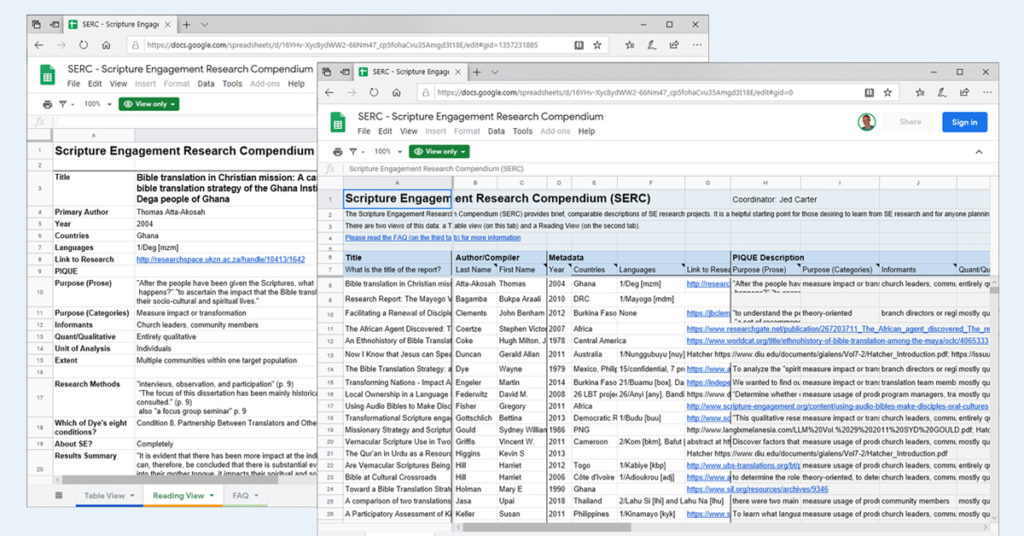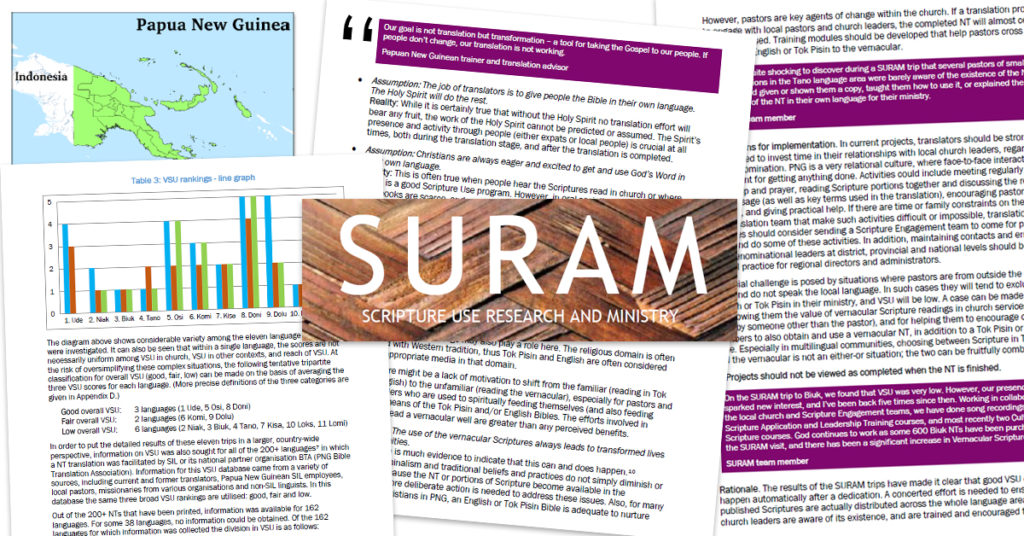
This study represents the largest sample of research on factors influencing Scripture Engagement to date, examining seventy projects in Africa, Asia, Latin America, and Oceania, and representing multiple Bible translation agencies. The data has been analyzed statistically to identify factors that more frequently correlated to high levels of use of vernacular Bible translation projects.
The key findings below detail the top factors identified in this statistical analysis.
- Theological Mismatches. The research found that a significant number of host communities held theological views about vernacular Bible translation that were different from those held by Bible agencies and/or funding agencies, and these differing theological views about the Bible, Bible translation, and ecclesiology led to low levels of use or no use of Bible translations.
- The Effectiveness of Arts Strategies. Programs that had active arts strategies had higher levels of use than those that did not. Arts strategies are statistically tied with the other five top scoring factors; it is just as influential as ownership, theological issues, and contextualization.
- Centrality of Local Ownership. Three of the six top factors were related to local ownership: ownership, partnership with church leaders and leaders of other missions, and Bible agencies maintaining a servanthood ethos. Without local ownership, an otherwise excellent Bible translation is less likely to be used.
- Limitations of Ownership. One of the unexpected findings in this data set was programs that scored well on local ownership but still had minimal levels of use of mother tongue Scriptures. One third of the projects that scored high on local ownership had very low levels of use or no use. This demonstrates that local ownership alone is not enough to guarantee a successful Bible translation program.
- Contextualization Strategies. Contextualization strategies correlated to high levels of use of vernacular Bible translations in resistant, non-Christian contexts. Conversely, Bible translation projects in resistant, non-Christian contexts that eschewed contextualization strategies correlated to low levels of use or no use. Different teams used various contextualization approaches including Christian versions of life cycle rituals, local music and dress, contextualized evangelism, and others.
- Orality and Modality Ecosystems. When oral and media strategies are combined (“aural strategies”), they rank among the top factors for success. Programs that use multiple complementary modalities (audio, print, video, etc.) are more effective than those relying on just one.
Scripture Engagement Dynamics is the initial research project of the Scripture Engagement Research Initiative of Dallas International University. The full report is available for download from the Scripture Impact website.







